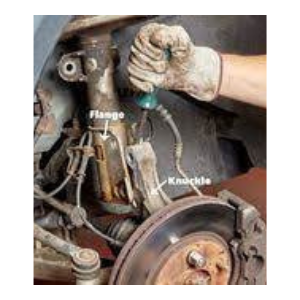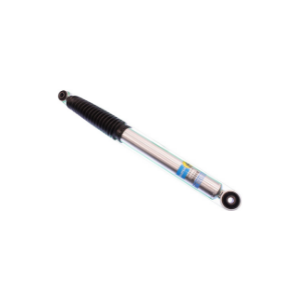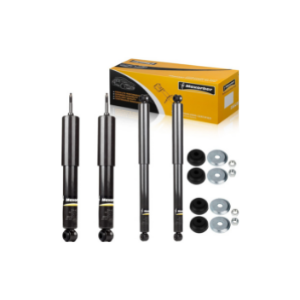Is It Time to Replace Your Shocks and Struts? Here’s How to Do It Yourself!
Has your vehicle covered 80,000 miles or more with the same shocks and struts? If yes, it’s probably time to replace them! Worn-out shocks and struts can affect your car’s stability, making your rides less smooth and even unsafe.
The good news? Replacing shocks and struts isn’t as complicated as it used to be. Modern vehicles make it easier, thanks to pre-assembled strut kits. With these kits, you can replace your car’s front struts by yourself in just a couple of hours, without needing professional help.
If you’re wondering, “Is it hard to replace worn-out shocks?”—the answer is no! Modern strut assemblies eliminate the need for assembling springs, mounts, and other components, making the process straightforward.
Ready to learn how? Scroll down and follow our step-by-step guide. By the end of this article, you’ll feel confident enough to replace your shocks and struts like a pro!
How should you understand that your car needs a new shocks and struts?
Table of Contents
Your car’s shocks and struts play a crucial role in ensuring a smooth and safe ride. Ignoring worn-out shocks can lead to uncomfortable driving and even safety issues. Here are five clear signs that it’s time to replace them—and remember, always replace both shocks at the same time for the best performance.
1. Oil Leaks from the Shocks
If you notice oil leaking from your car’s shocks, it’s a sign they’ve lost their seal and can no longer perform effectively. Replace them right away to avoid further damage.
2. Trouble Staying in Your Lane on Rough Roads
If your car struggles to stay steady on bumpy or gravel roads, your shock absorbers are likely worn out. Don’t delay replacing them, as they help maintain control and stability.
3. Tires Bouncing Instead of Rolling Smoothly
Do your tires seem to bounce slightly instead of rolling smoothly? This is a clear sign that your shock absorbers are no longer absorbing impacts as they should.
4. Extra Bounce or Front-End Dive During Braking
If your car bounces excessively, sways more than usual, or dips forward sharply when braking, it’s time to replace your shocks and struts. These issues can affect your car’s handling and safety.
5. Damaged or Dented Strut Body
A dented or damaged strut body means it’s no longer providing the necessary support. Replace the struts immediately to restore proper suspension function.
By paying attention to these signs and replacing your shocks and struts in pairs, you’ll ensure your car remains stable, comfortable, and safe to drive. Regular maintenance goes a long way in improving your driving experience!
Is it risky to drive on a worn out shocks and struts?
Driving with worn-out shocks and struts is not just uncomfortable—it’s risky. Did you know that damaged shocks can increase your stopping distance by up to 10 feet when driving at 60 MPH? That extra distance could make all the difference in avoiding an accident.
Worn shocks also make your steering less stable, especially when taking turns at high speeds. This instability can lead to dangerous situations, as your car becomes harder to control.
Don’t take chances with your safety. If your shocks and struts are showing signs of wear, replace them immediately to ensure a smoother, safer driving experience.
What are the other car parts will damage if you do not replace the worn out shocks and struts on time?
If you wait too long to replace worn-out shocks, the extra bouncing can cause serious damage to your car. Over time, the uneven ride can wear down your tires and put stress on other expensive suspension parts, such as ball joints, control arm bushings, and stabilizer bar end links.
Replacing your shocks on time is not just about comfort—it’s about protecting your car from costly repairs down the road. Keep your ride smooth and your car’s suspension system in good shape by addressing worn shocks as soon as possible.
How to Replace Shocks and struts 2025

Here’s a simple 10-step guide to help you replace worn-out shocks and struts on your own:
Step 1: Check the Shocks
Before starting, check if your shocks need replacing. Look for signs like oil leaks, poor steering control while turning, or bouncing tires when driving over bumpy roads.
Step 2: Get a Strut Assembly
Buy a strut assembly for the job. Though it might cost more, it makes replacing both the shocks and struts easier and faster.
Step 3: Disconnect Components
Start with one side of the vehicle. Lift the car with a jack and secure it with a jack stand. Disconnect any parts attached to the strut, including the nuts, bolts, and brake lines. Spray the strut-tower mounting nuts if rusty.
Step 4: Remove Stabilizer Bar and Sensors
Use a wrench to disconnect the stabilizer bar end link, then loosen the nut with a socket and ratchet. Also, disconnect the wheel speed sensor wiring.
Step 5: Loosen Nuts and Bolts
Use a wrench to loosen the nuts and bolts on the strut. Then, shake the steering knuckle to remove the bolts.
Step 6: Pry Out the Strut
Insert a pry bar between the strut and knuckle and pry the knuckle until it pops out of the strut flange.
Step 7: Loosen the Strut Mount Nuts
Loosen the remaining strut mount nuts using a socket ratchet, leaving one nut still attached for support.
Step 8: Remove and Replace the Strut
Support the strut carefully while you remove it. Install the new strut, ensuring the nuts are positioned as before. If you’ve noted the angles, it’ll be easier.
Step 9: Install the New Strut
Get a friend to help hold the strut in place while you secure the nuts. Tighten the bolts, align the steering knuckle, and check the camber angle to ensure everything is aligned.
Step 10: Reinstall Removed Parts
Once the new strut is in place, reinstall the parts you removed, such as the stabilizer bar, sensors, and brake lines.
By following these steps, you can replace your shocks and struts with ease and restore your car’s handling and comfort.
Have a Test drive after completing the Job
After replacing the worn out strut you must have a test drive. To check whether everything is fine or not. While having test drive you must drive your car at a slow speed and check everything is running smoothly or not. If you think that everything is running smoothly then you should feel proud that you have done the job perfectly on your first attempt.
How much does it cost to replace shocks and struts?
The cost of replacing shocks and struts can vary depending on the type of parts you choose for your car. If you opt for higher-end, premium shocks and struts, the cost will be on the higher side. On the other hand, if you’re looking for budget-friendly options, the price will be more affordable.
On average, the cost of new shocks and struts typically ranges between $100 to $200 per unit. However, replacing shocks and struts requires some physical effort, so you might need a friend’s help to get the job done. This could add an additional $50 to $100 to the overall cost, depending on what you agree to pay for their time and effort.
Thus, the total cost for replacing shocks and struts yourself is usually between $150 to $300, including parts and any help from a friend.
Conclusion
In this article, we’ve outlined the 10 simple steps to replace your shocks and struts, making the process easy to follow and boosting your confidence to take on the task yourself. However, if you still have any questions or need further guidance, don’t hesitate to check out the tutorial video above to clear up any confusion.


